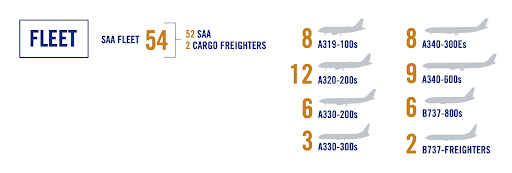Under pressure to reduce costs and shore up the balance sheet, business rescue practitioner Les Matuson has begun the process of selling SAA assets.
SAA is selling nine of its commercial airliners, 15 spare engines and four auxiliary power units, commonly used on large aircraft.
The sale was advertised on the government tender board on 10 January 2020 and is, without doubt, urgent. Interested bidders have until 30 January to respond.
SAA was placed into voluntary business rescue in December 2019 after its working capital dried up and National Treasury refused another bailout. As part of this process government and SAA’s commercial lenders each agreed to provide the airline with R2-billion in working capital to give the business rescue process a chance of success.
The alternative was liquidation.
However, National Treasury is scrambling to come up with its share of the funding, as reported in Business Day.
“As of yesterday when I was speaking to the director-general of National Treasury we were still trying to find additional financing for SAA. … Let’s keep our fingers crossed,” was all Finance Minister Tito Mboweni would say before departing for the annual World Economic Forum meeting in Davos, Switzerland.
The sale of the five A340-300 and four A340-600 aircraft is part of a process first to shore up the balance sheet, but more important, to offload planes that were becoming old and expensive to run.
“As part of SAA’s ongoing fleet management plan, the process to phase out older planes and the engines that relate to these older planes was started prior to the entity being placed into business rescue,” says Les Matuson, joint business rescue practitioner with Siviwe Dongwana. “The SAA tender process for sale was held up due to various reason but was fast-tracked once SAA went into Business Rescue. These aircraft flew regional and international routes, which are now flown by A330s and A350s.”
According to SAA’s most recent annual report (for the 2017 financial year) “there was only a maximum of four years remaining for the A340-600 fleet and six months for the A340-300 fleet as at 31 March 2017.”
SAA has 52 commercial airlines in its fleet. Of these eight are A340-300’s and nine are A340-600s. It is selling half of these.
Who will buy these planes remains to be seen. The only other airlines flying them commercially are Lufthansa and Iberia, though smaller operators may be interested.
Not all aircraft are sold to other passenger carriers. They could be sold for conversion into freighters or to companies that dismantle the planes, sell the engines, undercarriage legs and any other salvageable components, and scrap the fuselage and wings.
“It may be difficult to sell the -600’s as they are ‘old technology’, and it’s easier to sell the -300’s,” says a retired SAA pilot. “Both are 4-engine planes which are being replaced by 2-engine aircraft these days.”
While all but one of the planes is in active service, SAA has already begun substituting some of the A340s with four leased A350s that they took delivery of late 2019, said Linden Birns, MD of Plane Talking.
“In terms of international aviation trends, airlines would prefer to lease planes rather than own planes, which is the trend that SAA has followed,” says Matuson.
SAA selected the A340s because at the time (2002) they were best suited to Johannesburg’s unique geophysical characteristics (5,300 ft above sea level elevation and average temperatures of 25°c).
“They were the only planes capable of taking off with optimal payloads and fuel to operate non-stop on routes to Hong Kong, New York, Perth and Sao Paulo,” says Birns.
Since then, regulatory changes governing the use of twin-engine planes over water and desolate terrain as well as improvements in the design, manufacture, the economics and reliability of aircraft and engines has made it feasible for twin-engine jetliners such as the A330, A350, 777 and 787 to operate those sorts of routes, effectively rendering a 250- to 330-seat quad-engined plane redundant, he says.
FLEET GRAPHIC

Source: SAA annual report 2016/17
What price they will command remains to be seen. According to the annual report, while the carrying value of the A340-300 fleet was estimated at R2,153-billion, the residual value (fair market value) is closer to R335-million. The report makes no specific mention of the value of the A340-600s.
However, the proceeds of these planes does not fall within the R2-billion funding requirement that is being sought from Government”.BM





















 Become an Insider
Become an Insider